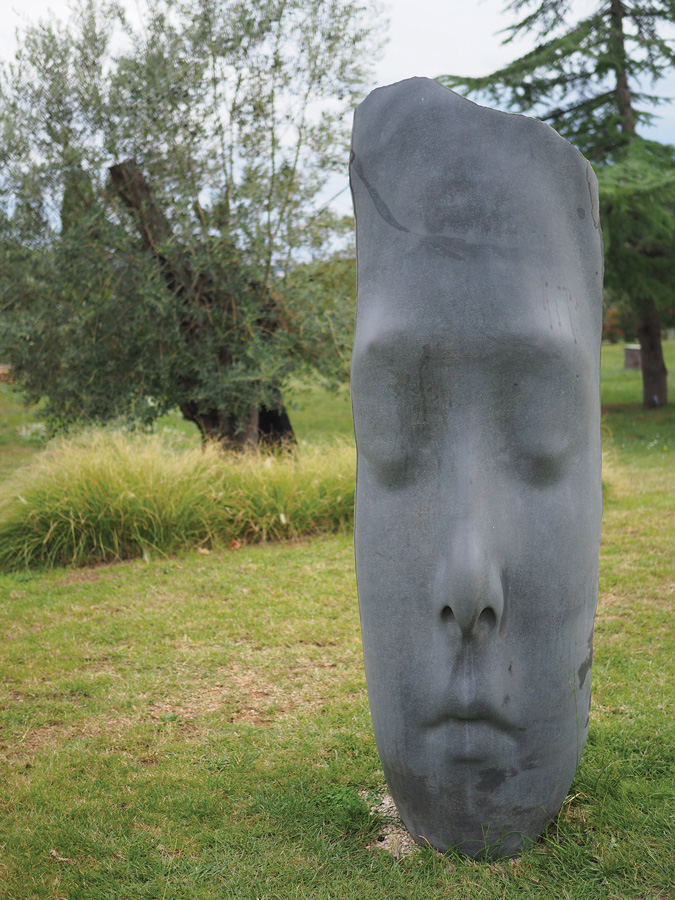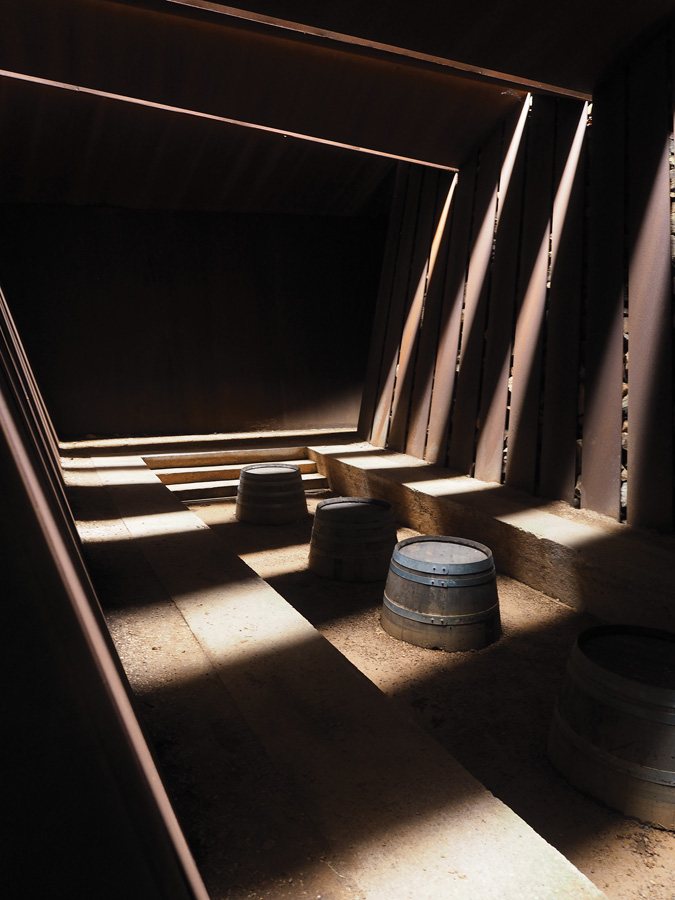Bravo Brugarol
A Spanish sojourn to imbibe the gastronomic, architectural and natural delights of a Catalonian farmhouse and winery.
On approach to Finca Bell Lloc set in the rolling coastal hills of Catalonia’s Empordà behind the Costa Brava, you could reasonably be mistaken for thinking you were touring through Victoria’s Mornington Peninsula wine region. Eucalypts cover the ridges and small streams emerge from the dense gullies flowing down to the coastal plain. But then your eyes widen as you arrive at the striking farm entrance and spy the 12th century Vila Roma castle beyond the two hundred-year-old farmhouse.
The farm has been owned by a Swiss family for three generations. They planted vines over a decade ago and began exploring designs for the winery. In the meantime local produce has been expanded to include olive groves, beekeeping and pigs, with a large vegetable garden that supplies fresh produce year-round for farm guests.
Alongside the farmhouse is a small olive mill and the obrador – the food production house for goat’s cheese, jams, pickles, cured meats and pâtés. In late autumn it’s a hive of activity with olive oil being pressed, jam for cakes being prepared from angel hair pumpkin, and meats cured and stored.
This area of Empordà is a fertile region which once fed pilgrims as they made their peregrination to the church of Santa Maria. The area is steeped in history as the locals fought against the invading Napoleonic armies. Nearby Girona was twice able to hold off the French emperor’s forces. There is also a dark history from the civil war with loyalists retreating into the roadless foothills.
In 2006 three architectural firms were invited to present concepts for a winery. The process took the form of a collaborative workshop with all three firms presenting together. The selected design by architects RCR (who were awarded the prestigious Pritzker prize in 2017) was built in 2007. RCR principal Rafael Aranda enjoys a strong affinity with the region; with a residence down the valley his local knowledge was critical in the design and layout. The winery is named Brugarol, which is Catalan for small tree displaying strong roots and limbs. And this nomenclature resonates with the specifics of the groundbreaking winery.
The crux of the design is corten steel sheets recycled from decommissioned ships. The striking oxidised steel entrance leads the eye deep into the caverns of the winery. Steel blades protrude into the vineyard and descend some three levels into the ground, providing natural light and ventilation. The steel baffles extending above the earth amidst the vineyard serve to deflect the harsh katabatic Tramontana winds of winter. The positioning of the winery deep below the vineyard ensures constant temperature and humidity throughout the year, with no need for artificial heating or cooling. At ground level a striking steel and glass winemakers’ laboratory is accessed via a large swinging door with an expansive view of a verdant forest.
The farmhouse recently opened four rooms for accommodation. The fit-out is not ostentatious, and is in keeping with the vernacular of the original style. Large windows face to the east with expansive views of the vineyards and hills beyond to the coast. Set in the foreground is Laura, a sculpture from local basalt by Catalan artist Jaume Plensa. The beauty and tranquility of this piece can really only be appreciated up close as the light and shading alters during the day. The farm offers a peaceful environment inviting lengthy walks alongside streams and through moody woods.
The owners’ philosophy of natural qualities pervades the farm and the winery. The management and staff are effusively proud of the quality of food, wine and accommodation. The visit for guests attending conferences or on vacation is a treat but, importantly, also a learning experience of Catalan craftmanship and care.











